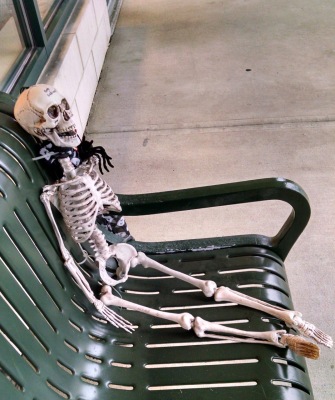We were downtown for drinks and dinner at Seven Saints with Barbara and Rosie, and I noticed a rather spectacular sunset (click for larger, more spectacular version).
A merely fair picture of it—it was more spectacular in person—but good enough, I thought, to share.
And, in relation to my recent post on pelvises, among the Halloween decorations inside Seven Saints, I happened to notice another depiction of a skeleton with iliac crests dramatically smaller than an actual skeleton’s. Look at that! Surely no one could expect a lifetime exposure to such misleading representations to do anything other than produce a whole range of body dysmorphic issues.



